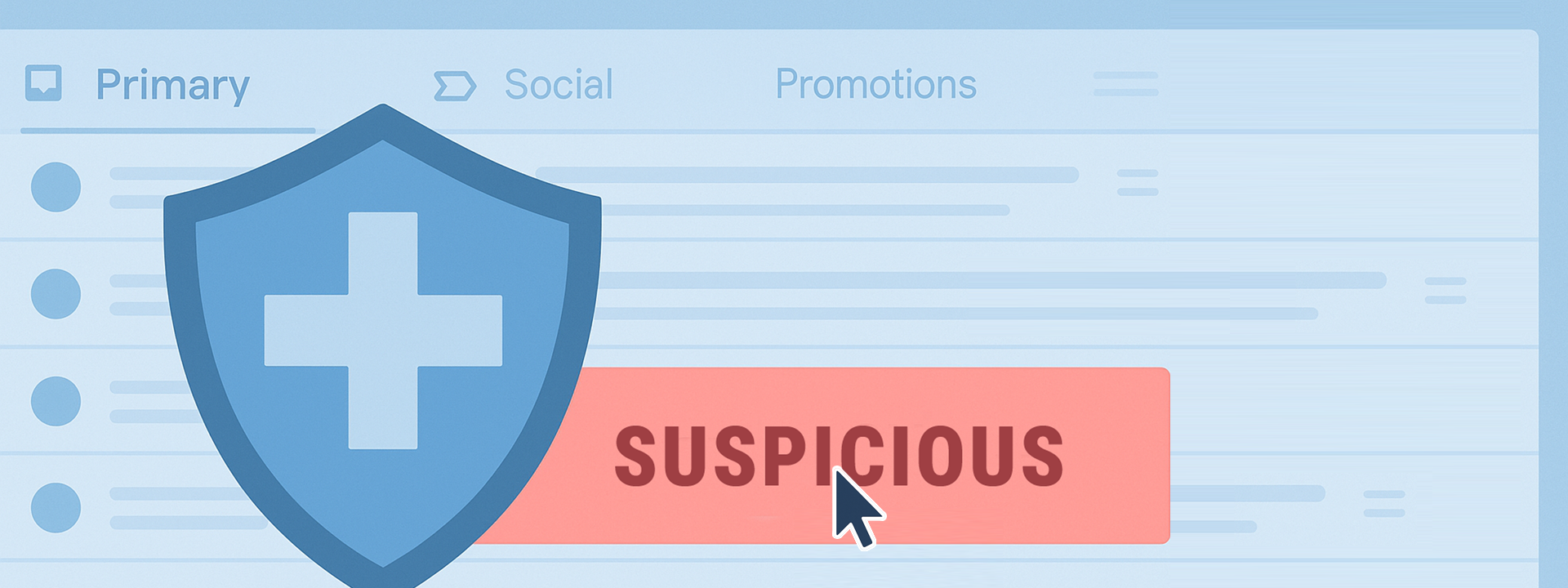
Email is the main entry point for cyberattacks. One wrong click can compromise systems, expose data, or infect devices. But with a sharp eye and know-how, you become the defense.
📧 How Cybercriminals Use Email
- Phishing: The top tactic—over 90% of cyberattacks on health care begin here. These deceptive emails trick you into giving up passwords, account info, or access credentials; a single click can spark a serious breach.
- Malware: Hidden in attachments or disguised links, it's the stealth threat that can spy on you, lock your device, steal data, or let attackers in.
- Spoofing: Phishing’s sneaky sibling. These messages look like they're from someone you trust—your boss, your coworker. But they’re crafted to exploit trust and urgency to trick you into clicking or sharing info.
- Spam: Bulk junk that often carries malicious links or scams—watch out for flashy offers or fake “warnings.”
⛔ Red Flags – What to Watch For
- Typos or weird URLs: Tiny changes like “Netffix” or “Facobook” are giveaways. Always hover over links before clicking.
- Fake urgency: Requests demanding quick action—buy gift cards, wire money, share info—are classic scam tactics.
- Too good to be true: Surprise prize offers or unbelievable deals? Likely bait.
- Odd greetings: Formal “Dear Sir/Madam” in casual company emails? Red flag.
- Weird senders/addresses: Compare them to past legitimate emails. Don’t trust if they don’t match.
- Strange attachments: Is it an unexpected .zip, .exe, .scr, or .html? Don’t open it—especially if the file type is uncommon in workplace email.
- Requests for credentials or money: Legitimate companies won’t ask for password or payment info via email link.
📌 Health Care Context
The HIPAA Journal and the U.S. Department of Health and Human Services report that over 90% of cyberattacks on health care organizations begin with phishing emails, often through malicious attachments or links. Source
🔐 What You Can Do
- Validate: If you're suspicious, contact the sender through known channels—not via the email.
- Pause before clicking: Unexpected attachments or links? Don’t open them.
- Report immediately: Use your Outlook phishing/report button.
- Train your instincts: A little skepticism goes a long way.
👀 Real-World Impact
St. Margaret’s Health, a rural Illinois hospital, permanently closed after a ransomware attack compounded financial struggles. Similar incidents have shut down other small and rural health care providers.
Average cost of a health care breach? Over $10 million. Real lives, services, and entire communities are affected.
🏥 Why It Matters for Health Care
- Health care breaches are rising: In 2023, over 133 million patient records were exposed in 725 reported incidents.
- Patient care disruptions from IT outages delay diagnostics, cancel appointments, and even divert ambulances.
- Small and rural providers face the highest risk due to limited cybersecurity resources and outdated systems.
🎯 Be a Cyber Sentinel
If something feels off—report it. Quick action stops threats before they spread across the network.
Helpful Practices for All Staff
- Keep security software updated on computers and phones.
- Use multi-factor authentication for extra account security.
- Regularly back up your data—store it offline or in a secure cloud location.
- Be cautious with any link or attachment, no matter how legitimate it looks.
📚 Learn & Stay Ahead
Check your organization’s cybersecurity site or reach out to your IT department for:
- Phishing simulation exercises
- Security best practices and guides
- Regular updates on threats and protection tips
Cybercriminals are clever—but you’re smarter. Stay alert. Stay secure.
- Log in to post comments